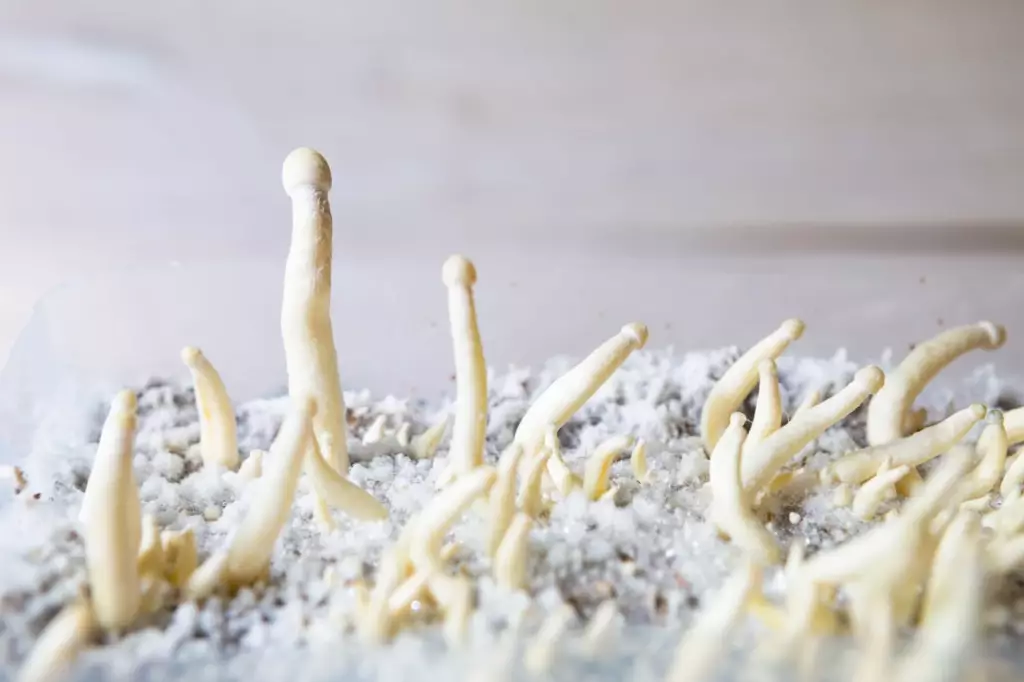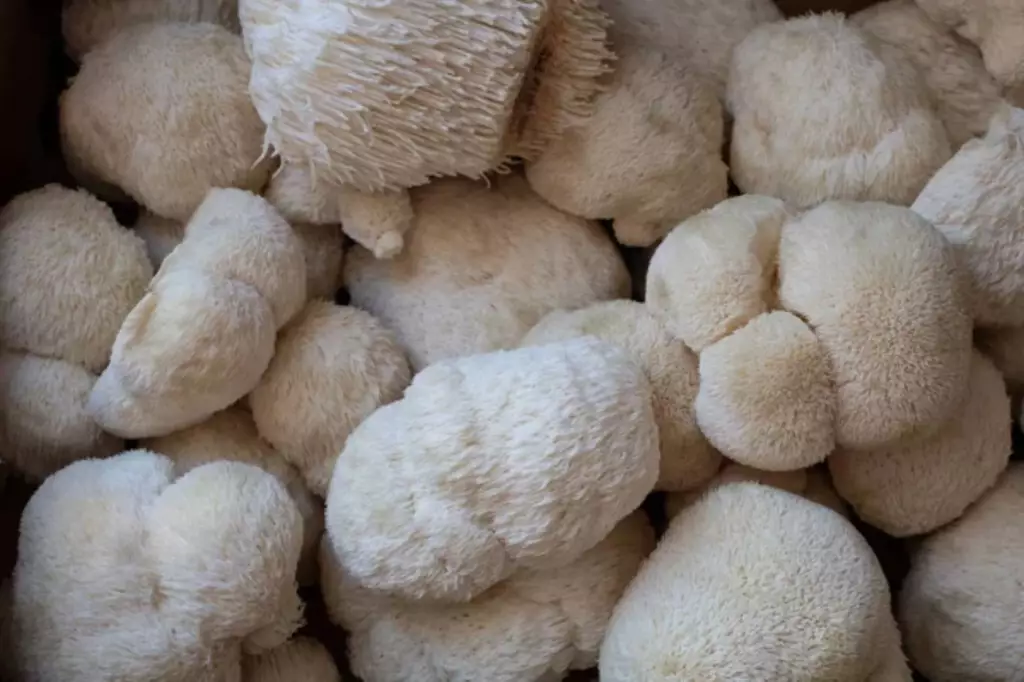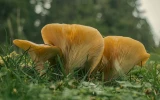How To Grow Lion's Mane Successfully: Foolproof Guide
Lion’s mane mushrooms are one of the easiest mushrooms to grow. The process of growing them is just like growing any other gourmet mushroom. Here’s a foolproof guide on how to successfully grow lion’s mane mushrooms.
To grow lion’s mane mushrooms, gather all supplies and equipment needed, select your spawn, prepare the substrate, inoculate the substrate with spawn, incubate the block, induce pinhead formation, and create fruiting conditions. To guarantee success, specific temperature, humidity, and other growth factors must be considered from spawning to fruiting time.
While the process of growing lion’s mane mushrooms looks very similar to growing oyster mushrooms, there are a few notable differences to take note of. You will get to know more about these differences as you read below.
Summary
- Growing lion's mane mushrooms is no different from growing other types of gourmet mushrooms like shiitake and oyster.
- To start, you must gather all your supplies, prepare your substrate and sterilize it, conduct inoculation in the most aseptic way possible, incubate the inoculated substrate, and create fruiting conditions to produce quality lion's mane mushrooms.
- To know if the block has been fully colonized, watch out if it has become denser and firmer and has become slightly lighter in color since the mycelium of lion's mane mushrooms is thread-like and it will be hard to guess if the block is already colonized or not.

Growing Lion’s Mane Mushrooms Successfully from Start to Finish
Lion’s mane mushrooms differ in appearance from most gourmet mushrooms, especially with their needle-like gills and pom-pom-like appearance. They have a high moisture content and are very delicate compared to oysters, shiitake, or button mushrooms; therefore, transporting them from farm to table is a real challenge.
Because they easily get damaged, they are hard to find at the local grocery stores or markets. For this reason, to be able to have high-quality lion’s mane mushrooms, most people opt to grow them on their own.
If you opt to grow your mushrooms indoors, it won’t be a problem if you have the standard equipment needed to grow mushrooms. There are several methods you may consider when growing lion’s mane mushrooms indoors. The best method to choose will depend on your level of experience.

If you’re new to mushroom farming, the best way to grow lion’s mane mushrooms is by purchasing a growing kit. Mushroom-growing kits already have an inoculated and incubated substrate. You will only need to provide the optimum conditions to make sure they grow well.
Alternatively, you can also grow lion’s mane by purchasing spawn from a reputable supplier and inoculating it with your substrate. If you have more experience, you can start from scratch and make your own spawn of lion’s mane.
Below is a step-by-step guide on growing lion’s mane mushrooms from a purchased spawn:
1. Gathering supplies is the first step in growing lion’s mane mushrooms
The first step in growing mushrooms is to have every material and piece of equipment on hand. Some of these are the following:
| Materials | Equipment |
|---|---|
| Lion’s mane spawn | Measuring cup |
| Hardwood pellets | Scale |
| Oat or wheat bran | Bucket or bowl |
| Water | Pressure cooker |
| Growing bags, buckets, or containers |
Lion’s mane grows best in hardwood chips substrate, but if these are rare to find, an easy alternative will be hardwood pellets. They make a great choice for growing mushrooms, plus they are cheap and easy to store. They are also readily available and can be purchased at local retail stores or hardwood stores.
2. The next step in growing lion’s mane mushrooms is to prepare the substrate
Substrates provide the nutrient source for the mycelium. For lion’s mane mushrooms, the best substrate that they can easily consume is hardwood pellets supplemented with bran.
Although hardwood pellets are already sterilized, the added wheat or oat bran needs to be sterile too, which means the whole mixture will still need to undergo sterilization.
The recipe to make a 5-pound block of substrate for your lion’s mane are:
- 5 cups of hardwood pellets
- 1 and ¼ cups of bran
- 6 cups of water
Get the bucket or bowl prepared earlier and combine the pellets and water on it. The pellets will now break and become sawdust. Add the bran to the sawdust and mix until evenly distributed.
Do a squeeze test to check if the substrate has the right moisture content. You will know you have successfully attained the right moisture content if only one to two drops of water have come out. Too much water will mean that it’s too wet, and no water coming out will mean that the substrate is too dry.
When all is done, place the mixture into a grow bag or a fruiting container of your choice, and expel as much air as possible. Fold the bags with the substrate and sterilize them in the pressure cooker for 2 and half hours at 15 psi.

Sterilization of substrate and tools to use is important to speed up the growth of mycelium even faster. After pressure-cooking the substrate, allow the pressure cooker to depressurize. Do not open until cool. You can opt to let it cool down for 8 hours before moving on to the inoculation stage.
3. Inoculate the spawn to the substrate to start the growing process
Inoculation is the process of adding the mushroom spawn to the sterilized substrate. This process must entail aseptic techniques so before anything else, wipe down all workspaces with alcohol and ensure that all object that encounters the media or spawn is sterilized beforehand.
Washing your hands thoroughly is also required before conducting this process to avoid contamination. When all is done, you may now add your lion’s mane spawn to the wet substrate bag. The recommended spawn rate is at least 5%.
Make sure to evenly distribute the spawn in the substrate and close the grow bags immediately after inoculation to prevent the entrance of microbial competitors such as yeast and molds. You can either use an impulse sealer, zip-ties or grow bag clips.
4. Incubate the growing bags to allow the spawn to grow and spread throughout
After inoculating the bags, store them in a dark, warm area. The ideal spawning or colonization temperature for lion's mane mushrooms is between 68°F and 75°F (20°C and 24°C).
During this stage, the lion’s mane spawn is encouraged to grow and spread throughout the bag and completely colonize the substrate. It takes around two to three weeks for your lion’s mane substrate to become fully colonized.

You will know that the block is ready to fruit when you observed the following:
-
The grow kit is dense, firm, and uniformly covered with white mycelium. Although it’s hard to tell since the mycelium of the lion’s mane is wispy, a good sign to look out for is if the blocks slightly lightened in color.
-
Loose sawdust-like material with random balls or clumps indicates that the mycelium has fully colonized the hardwood substrate.
5. Create optimal fruiting conditions to produce quality lion’s mane mushrooms
When the substrate has been fully colonized, the incubation stage is over, and you can now prepare your block to fruit. Cut a small ‘x’ or poke 1/8-inch holes in the side of the bag to expose the mycelium to fresh air. Place them in a humid, shady area and mist the substrate once or twice a day to keep it moist and healthy.
After two to three days, pinheads (primordia) will start to form on your substrate. These will grow into mature mushrooms soon. Once fruiting bodies are visible, set the right fruiting conditions such as temperature, humidity, fresh air exchange rate, and CO2 level.



